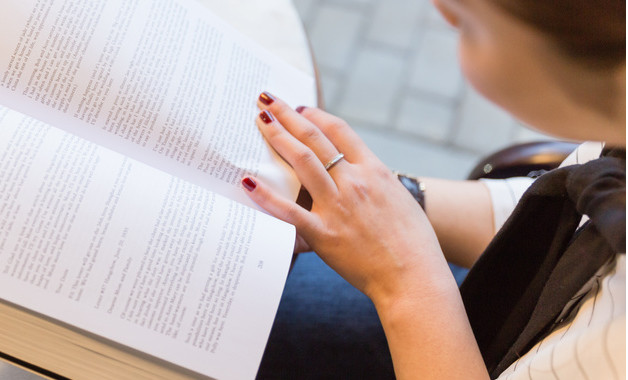
第1篇 小学英语语法知识点总结:情态动词
我们现在学过的情态动词有:can, could, will, would, may, must, should, shall。
情态动词后动词总是用原形。(不受其他任何条件影响)
特征
1)情态动词(modal verb)本身有词义,表示说话人的语气或情态,但词义不完全,不能单独用作谓语动词,一般只能和动词原形一起构成谓语动词。
2)情态动词所表示的情态有:命令、允诺、请求、拒绝、愿望、愿意、义务、必要、可能、能力、敢于、需要等。
3)情态动词(ought除外)和助动词shall,will,should,would一样,后面的动词不定式一般皆不带。
形式变化
1)没有人称和数的变化,第三人称单数的现在时也无变化。如:
i can we can
you can you can
he
they can
she can
it
2)有些情态动词有过去式,有少数过去式和它的原形相同。
a)有过去式的情态动词有:
may -- would
can ―― could
may―― night
shall -- should
have to -- had to
b)过去式不变的情态动词有:
must - must (或had to)
ought to - ought to
need---need
dare - dare(亦可用dared)
3)大多数情态动词后面可用动词的进行式、完成式和被动形式,如:can(may,must)be doing,can(may,must) have done,can(may,must)be done等。
否定式
情态动词和助动词一样,后面可直接跟否定词not。现将情态动词的否定式及其否定式的简略式(简略式用于口语中)列举如下:
shall not--shan‘t [fb:nt]
will not---won’t [weunt]
can not-can‘t [kb:nt]
must not-mustn’t [5mqsnt]
should not-- shouldn‘t
would not-- wouldn’t
could not-- couldn‘t
dare not- daren’t [dzent]
need not-- needn‘t
在疑问句中的用法
情态动词在疑问句中的用法和助动词相同。如:
may i ask you a question? 我可以问你一个问题吗?
can you let me use your dictionary for a minute? 你能把字典借我用一会儿吗?
would you like to visit the heavy machinery plant? 你想参观重型机器厂吗?
注意have to在疑问句中的位置。如:
do you have to go out today? 你今天一定得出去吗?
does he have to finish the work tomorrow? 他明天非做完这项工作不可吗?
第2篇 中考英语情态动词总结
中考英语情态动词总结
need
(1)need 表示“需要,必须”,主要用于否定句和疑问句中。其否定形式为neednt,表示“没有必要,不必”;对由need构成的疑问句进行回答时,其肯定回答用must,否定回答用 neednt。如
—need we do some cleaning now? 我们必须现在大扫除吗?
—yes, you must. 是的',你们必须(现在大扫除)。
—no, you neednt. 不,你们不必。
(2)need 还可作实义动词,常用于下列结构:
①need to do sth“需要做某事”。如:
i need to learn more. 我需要学习更多(的东西)。
②need doing “某物需要被做”。如:
my hair needs cutting. 我的头发该理了。
③need +名词或代词。如:
all living things need water. 一切生物需要水。
第3篇 新概念英语(一)语法总结:情态动词的使用
导语新概念英语作为家喻户晓的英文学习教材,《新概念英语》在中国经久不衰,影响了好几代学习者。即使以今天的角度来看,这套出版于几十年前的教材无论是在编排体系,题材和题材,词汇还是语法上都有出彩之处,值得各个层次的人学习。
情态动词的使用
1)情态动词can(能够),must(必须),may(可以)
结构:主语+can/must/may+动词原型
he can make the tea.
sally can air the room.
we can speak english.
★变疑问句将情态动词移到句首
can he make the tea?
can sally air the room?
can we speak english?
★变否定句在情态动词后面加not
he cannot make the tea.
sally cannot air the room.
we cannot speak english.
★肯定回答及否定回答
yes, he can. / no, he cannot.
yes, she can. / no, she cannot.
yes, we can. / no, we cannot.
★特殊疑问句:(必背)
what can you do?
注意:情态动词的句子没有第三人称单数的变化,不要在情态动词或动词后面加s。
2)must/have to的区别
must 表示必须,是主观上觉得应该做,have to是不得不,是由于客观条件逼迫的必要要做
must 只能用在表示现在和将来的句子里,而have to do可以用在任何时态
3)must, may, might表示猜测:
· must do 表示对现在事实的猜测
· must have done表示对过去事实的猜测
· must have been doing 表示对过去正在进行的事实的猜测
· may/might do, may/might have done表示没有任何事实依据的猜测,might的可能性更小。
4)can't/couldn't 表示不可能
第4篇 八年级上册英语情态动词should知识点总结
八年级上册英语情态动词should知识点总结
为您整理了八年级上册英语情态动词should知识点:期末考试复习,希望帮助您提供多想法。和小编一起期待学期的学习吧,加油哦!
should作为情态动词用,常常表示意外、惊奇、不能理解等,有“竟会”的意思,例如:
howshouldiknow?我怎么知道?
whyshouldyoubesolatetoday?你今天为什么来得这么晚?
should有时表示应当做或发生的事,例如:
weshouldhelpeachother.我们应当互相帮助。
我们在使用时要注意以下几点:
1.用于表示“应该”或“不应该”的概念。常指长辈教导或责备晚辈。例如:
youshouldbeherewithcleanhands.你应该把手洗干净了再来。
2.用于提出意见劝导别人。例如:
youshouldgotothedoctorifyoufeelill.如果感觉不舒服,你最好去看医生。
3.用于表示可能性。should的`这一用法是考试中常常出现的考点之一。例如:
weshouldarrivebysuppertime.我们在晚饭前就能到了。
sheshouldbehereanymoment.她随时都可能来。
以上就是为大家整理的八年级上册英语情态动词should知识点:期末考试复习,大家还满意吗?希望对大家有所帮助!
第5篇 新概念英语语法总结:情态动词的使用
情态动词的使用
1)情态动词can(能够),must(必须),may(可以)
结构:主语+can/must/may+动词原型
he can make the tea.
sally can air the room.
we can speak english.
★变疑问句将情态动词移到句首
can he make the tea?
can sally air the room?
can we speak english?
★变否定句在情态动词后面加not
he cannot make the tea.
sally cannot air the room.
we cannot speak english.
★肯定回答及否定回答
yes, he can. / no, he cannot.
yes, she can. / no, she cannot.
yes, we can. / no, we cannot.
★特殊疑问句:(必背)
what can you do?
注意:情态动词的句子没有第三人称单数的变化,不要在情态动词或动词后面加s。
2)must/have to的区别
must 表示必须,是主观上觉得应该做,have to是不得不,是由于客观条件逼迫的必要要做
must 只能用在表示现在和将来的句子里,而have to do可以用在任何时态
3)must, may, might表示猜测:
· must do 表示对现在事实的猜测
· must have done表示对过去事实的猜测
· must have been doing 表示对过去正在进行的事实的猜测
· may/might do, may/might have done表示没有任何事实依据的猜测,might的可能性更小。
4)can't/couldn't 表示不可能
第6篇 情态动词的知识重点与难点总结
情态动词的知识重点与难点总结
1. 情态动词的推测表达
2. 情态动词表达虚拟语气
3. 某些情态动词的特殊用法
知识重点与难点总结
知识重点:
情态动词在表达推测意义的.句子中的运用:
(一)用情态动词表达事实的推测。can,could,might,may,must可以用来表达对事实的推测。根据说话人对事实的把握性大小,must表示肯定,may / might / can / could表示可能, must只用于肯定句中,may / might的否定式may not / might not表示 可能不, 而can / could可以用于疑问句,表示可能,可能吗?,其否定式cant / couldnt 表示不可能。用情态动词可以对现在或过去的事实进行推测。对不同的时间内容推测有不同的结构。
(二)对现在的事实进行推测:
主要结构:must / may / might +动词原形
be+名词/形容词/介词短语
be + doing
例句:
1. you must be jeanne. im mathilde loisel. we used to know each other very well.
第7篇 小学英语语法总结:情态动词的使用
情态动词的使用
1)情态动词can(能够),must(必须),may(可以)
结构:主语+can/must/may+动词原型
he can make the tea.
sally can air the room.
we can speak english.
★变疑问句将情态动词移到句首
can he make the tea?
can sally air the room?
can we speak english?
★变否定句在情态动词后面加not
he cannot make the tea.
sally cannot air the room.
we cannot speak english.
★肯定回答及否定回答
yes, he can. / no, he cannot.
yes, she can. / no, she cannot.
yes, we can. / no, we cannot.
★特殊疑问句:(必背)
what can you do?
注意:情态动词的句子没有第三人称单数的变化,不要在情态动词或动词后面加s。
2)must/have to的区别
must 表示必须,是主观上觉得应该做,have to是不得不,是由于客观条件逼迫的必要要做
must 只能用在表示现在和将来的句子里,而have to do可以用在任何时态
3)must, may, might表示猜测:
· must do 表示对现在事实的猜测
· must have done表示对过去事实的猜测
· must have been doing 表示对过去正在进行的事实的猜测
· may/might do, may/might have done表示没有任何事实依据的猜测,might的可能性更小。
4)can't/couldn't 表示不可能
第8篇 小学英语语法总结:情态动词
我们现在学过的情态动词有:can, could, will, would, may, must, should, shall。
情态动词后动词总是用原形。(不受其他任何条件影响)
特征
1)情态动词(modal verb)本身有词义,表示说话人的语气或情态,但词义不完全,不能单独用作谓语动词,一般只能和动词原形一起构成谓语动词。
2)情态动词所表示的情态有:命令、允诺、请求、拒绝、愿望、愿意、义务、必要、可能、能力、敢于、需要等。
3)情态动词(ought除外)和助动词shall,will,should,would一样,后面的动词不定式一般皆不带。
形式变化
1)没有人称和数的变化,第三人称单数的现在时也无变化。如:
i can we can
you can you can
he
they can
she can
it
2)有些情态动词有过去式,有少数过去式和它的原形相同。
a)有过去式的情态动词有:
may -- would
can ―― could
may―― night
shall -- should
have to -- had to
b)过去式不变的情态动词有:
must - must (或had to)
ought to - ought to
need---need
dare - dare(亦可用dared)
3)大多数情态动词后面可用动词的进行式、完成式和被动形式,如:can(may,must)be doing,can(may,must) have done,can(may,must)be done等。
否定式
情态动词和助动词一样,后面可直接跟否定词not。现将情态动词的否定式及其否定式的简略式(简略式用于口语中)列举如下:
shall not--shan‘t [fb:nt]
will not---won’t [weunt]
can not-can‘t [kb:nt]
must not-mustn’t [5mqsnt]
should not-- shouldn‘t
would not-- wouldn’t
could not-- couldn‘t
dare not- daren’t [dzent]
need not-- needn‘t
在疑问句中的用法
情态动词在疑问句中的用法和助动词相同。如:
may i ask you a question? 我可以问你一个问题吗?
can you let me use your dictionary for a minute? 你能把字典借我用一会儿吗?
would you like to visit the heavy machinery plant? 你想参观重型机器厂吗?
注意have to在疑问句中的位置。如:
do you have to go out today? 你今天一定得出去吗?
does he have to finish the work tomorrow? 他明天非做完这项工作不可吗?
第9篇 新概念英语第一册语法总结:情态动词的使用
情态动词的使用
1)情态动词can(能够),must(必须),may(可以)
结构:主语+can/must/may+动词原型
he can make the tea.
sally can air the room.
we can speak english.
★变疑问句将情态动词移到句首
can he make the tea?
can sally air the room?
can we speak english?
★变否定句在情态动词后面加not
he cannot make the tea.
sally cannot air the room.
we cannot speak english.
★肯定回答及否定回答
yes, he can. / no, he cannot.
yes, she can. / no, she cannot.
yes, we can. / no, we cannot.
★特殊疑问句:(必背)
what can you do?
注意:情态动词的句子没有第三人称单数的变化,不要在情态动词或动词后面加s。
2)must/have to的区别
must 表示必须,是主观上觉得应该做,have to是不得不,是由于客观条件逼迫的必要要做
must 只能用在表示现在和将来的句子里,而have to do可以用在任何时态
3)must, may, might表示猜测:
· must do 表示对现在事实的猜测
· must have done表示对过去事实的猜测
· must have been doing 表示对过去正在进行的事实的猜测
· may/might do, may/might have done表示没有任何事实依据的猜测,might的可能性更小。
4)can't/couldn't 表示不可能









